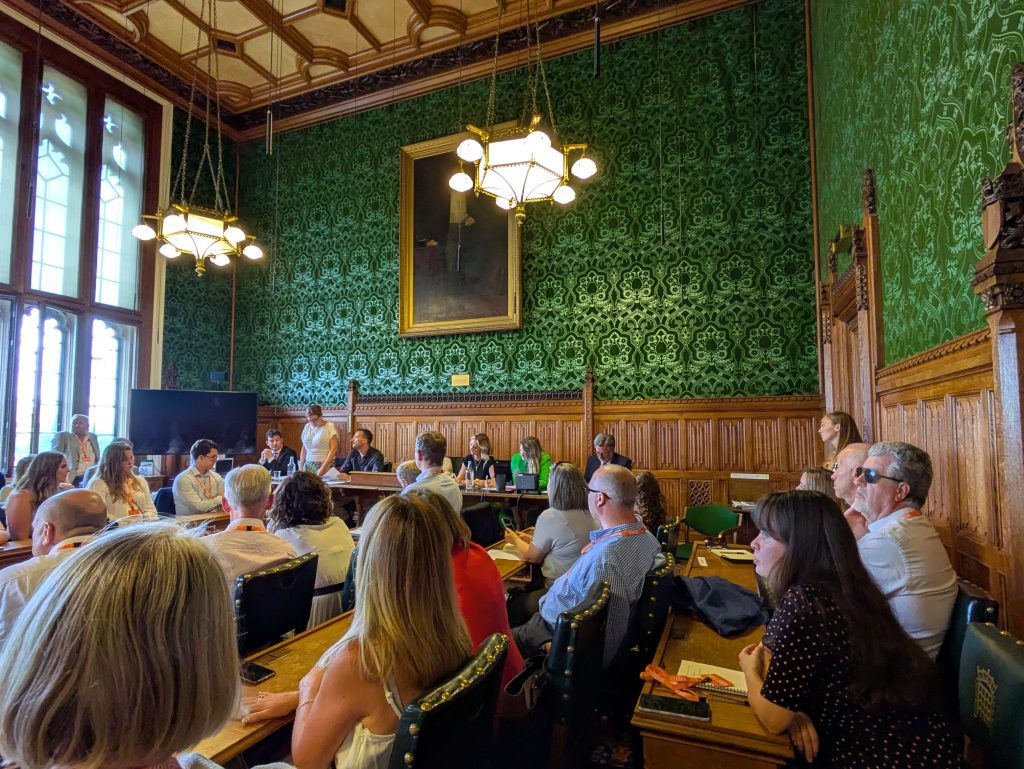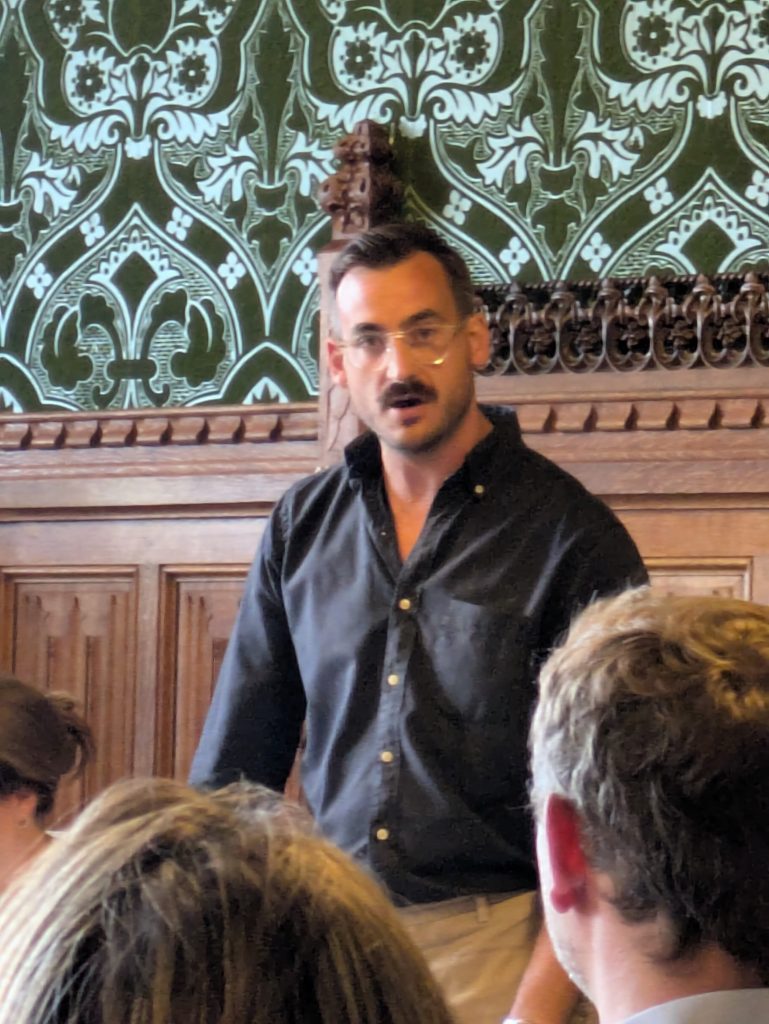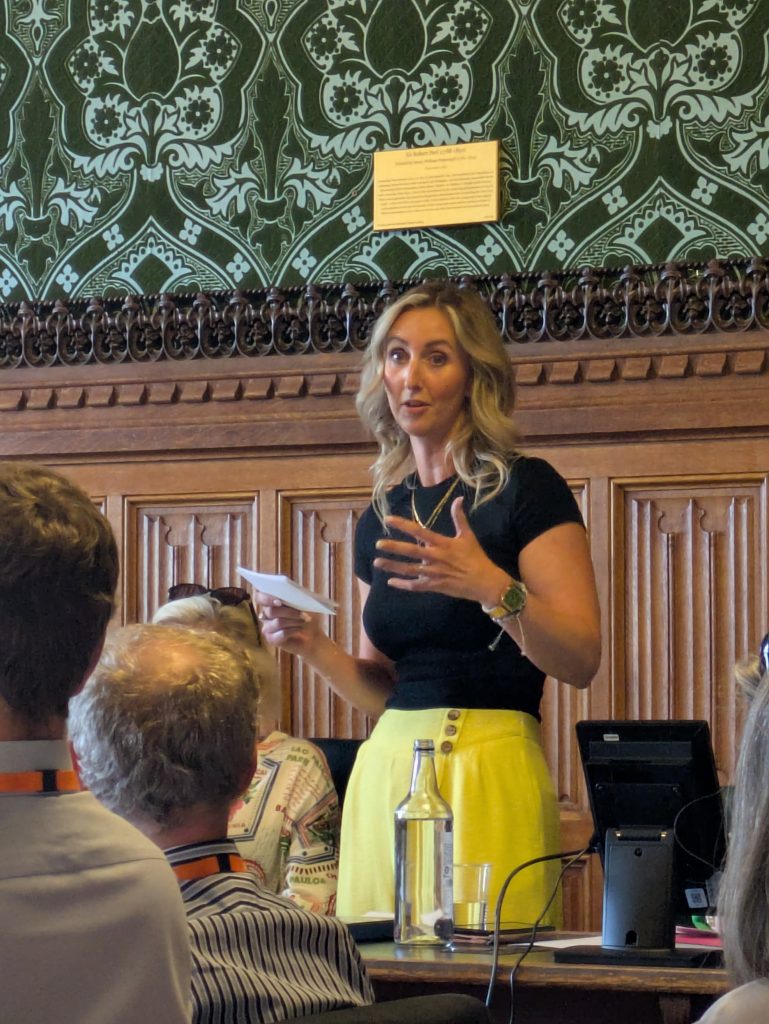The motion “Campaigns that include print are more effective” proved a hot topic for the panel and a packed audience
In an era dominated by digital metrics and online engagement, the enduring power of print was passionately debated within the historic walls of the House of Commons this week. Hosted by the Debating Group and sponsored by the Independent Print Industries Association (IPIA), the motion “Campaigns that include print are more effective” pitted experts in the fields of advertising and marketing against each other in a spirited discussion that explored the very purpose of print in a digital world.

Chaired by Rachel Gilmour, MP, the debate ranged beyond a simple nostalgic defence of ink-on-paper, delving into sophisticated arguments about trust, human psychology, and return on investment.
The case for print: “It makes it real”
The team proposing the motion argued that print’s unique strength lies in its tangibility and its ability to foster genuine, emotional connection in a cluttered digital landscape.

Angus George, Executive Creative Director of Ogilvy UK, framed his argument around a simple yet powerful theme: “Print makes it real.” He argued that the physical weight and permanence of print cuts through the “constant bombardment” of digital notifications, building a level of trust that digital media struggles to replicate.
George engagingly and humorously cited KFC’s now-famous ‘FCK’ apology ad. When the fast-food giant ran out of chicken, it took out full-page ads in major newspapers. “The pure act of printing this risky take on their logo proved to people that the company genuinely understood,” George stated, arguing a social media post would have lacked the same gravitas and sincerity. The campaign resulted in a 219% increase in positive brand sentiment.
Gemma Greaves, Founder of Nurture, built on this by positioning print as the “superhero” of a campaign. She presented data suggesting print delivers higher response rates and deeper emotional impact, citing that “70% of people say they feel more valued when they receive something in print.” In a world of “disposable” digital content, Greaves argued, print builds Recognition, Repetition, and Reputation.
“In a world full of filters, what is real, wins. Trust is gold,” Greaves declared.
The counter-argument: “Human-centric, not platform-centric”
The opposition countered that true effectiveness is not tied to a medium, but to a deep understanding of audience behaviour and measurable outcomes.

Missy Clements, Client Experience Director of 7DOTS, challenged the very premise of the motion. “Effectiveness is about being human-centric, not platform-centric,” she asserted. She pointed out that with 98% of Gen Z discovering brands through social media, a refusal to meet audiences where they are is a critical failure.
She argued that print’s static nature is a liability. It cannot be personalised, adapted for accessibility, or optimised in real-time. Citing industry research, she stated that the creative message and its context are far greater drivers of success (a combined 85%) than the choice of channel (15%).
Ellie Hale, Partnerships Director of Reflect Digital, drove the point home with a focus on data and behavioural science. Her powerful point was, “You can’t learn from silence.” While a print campaign is a one-way communication, digital is a “living experiment” providing a constant feedback loop.
“Print is a final draft, whereas digital is the living experiment,” Hale argued, highlighting digital’s ability to test, iterate, and precisely measure what drives action. “Effectiveness isn’t about what we hope people remember. It’s about what they do next.”
A nuanced reality
While the debate was framed as a head-to-head battle, the closing remarks and audience contributions suggested a more nuanced reality. Many of the comments from a predominantly print-friendly audience acknowledged the accessibility and measurability of digital but lauded the permanence and resilience of print. The consensus leaned not towards a victor, but towards intelligent integration. The most effective campaigns don’t choose between print or digital; they harness the unique strengths of both.
Print’s role as a builder of trust, a creator of legitimacy, and ability to deliver “real” emotional moments remains potent. However, this power is magnified when used as a gateway to dynamic, data-rich digital experiences. The future, it seems, is not about the death of print, but its evolution as a vital component of a sophisticated, multi-channel marketing ecosystem.
